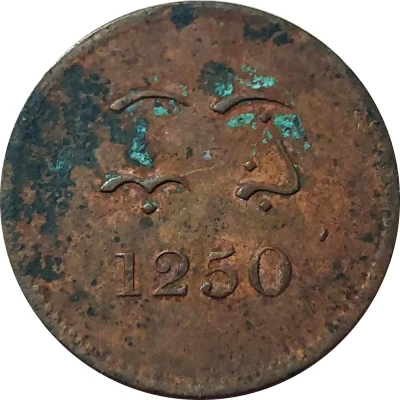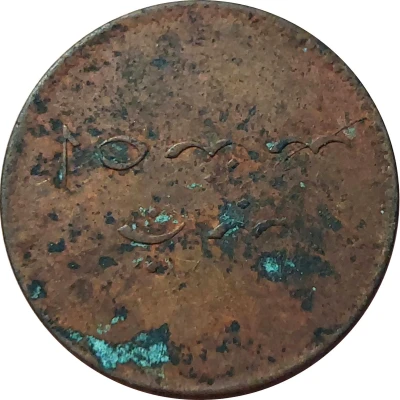


1 Duit Ugi
1250 (1835) year| Copper | 2 g | 20.9 mm |
| Issuer | Sulawesi (British East Indies) |
|---|---|
| Type | Token |
| Year | 1250 (1835) |
| Calendar | Islamic (Hijri) |
| Value | 1 Duit (1⁄400) |
| Currency | Keping |
| Composition | Copper |
| Weight | 2 g |
| Diameter | 20.9 mm |
| Shape | Round |
| Technique | Milled |
| Orientation | Coin alignment ↑↓ |
| Demonetized | Yes |
| Updated | 2024-10-04 |
| Numista | N#315750 |
|---|---|
| Rarity index | 91% |
Reverse
Lontara' inscription in two lines. Beads around border.
Script: Lontara
Lettering:
ᨔᨙᨕᨘᨓ
ᨉᨘᨓᨗ
Unabridged legend: Séuwa duwi(t)
Translation: One duit
Edge
Plain
Comment
It is unclear who first issued this coin. It has similar date and "tana ugi" legend as Christopher Ridout Read's cock token from A.L. Johnston & Company, Singapore, but Singh (1986: 446-447) did not mention whether this coin was part of Read's issue.Obverse legend has an error ᨓᨘᨁᨗ wugi which should have been ᨕᨘᨁᨗ ugi "Bugis". While the reverse legend in this coin uses the term "duit", catalogues may list this piece as "keping". Lack of final -t in "duit" is customary in Lontara' orthography, not an error.
See:
Saran Singh (1986) The encyclopaedia of the coins of Malaysia, Singapore, and Brunei, 1400-1986. pp: 446-447, 474
Interesting fact
One interesting fact about the Token 1 Duit (Ugi) 1250 (1835) from Sulawesi (British East Indies) made of Copper weighing 2 g is that it was used as a form of currency in the region during the 19th century, despite not being an official currency issued by the Dutch colonial government. Instead, it was a privately issued token that was widely accepted as a means of exchange among locals. This highlights the resourcefulness and resilience of communities in the region, who found ways to adapt and create their own forms of currency in the absence of official issuance.